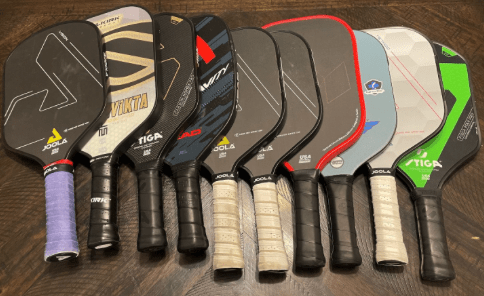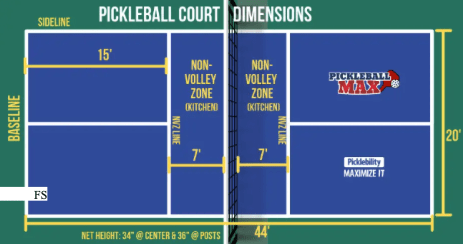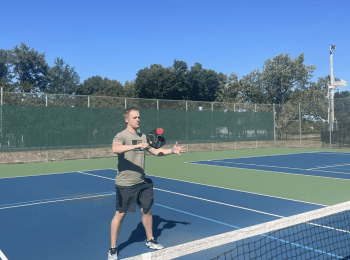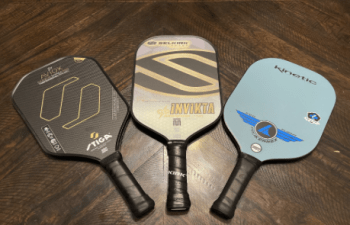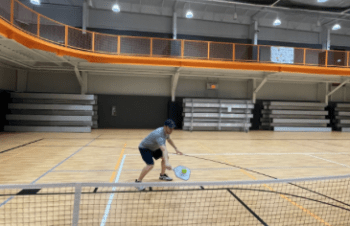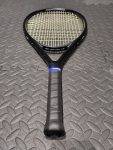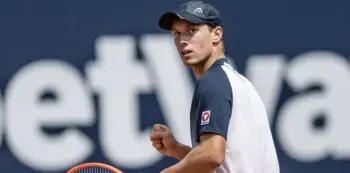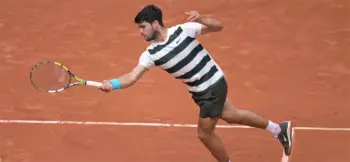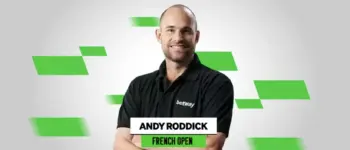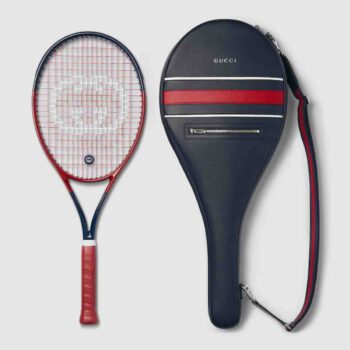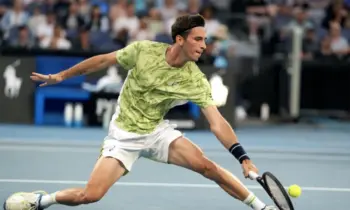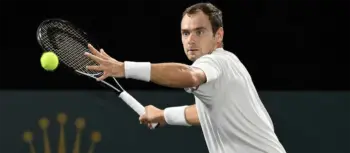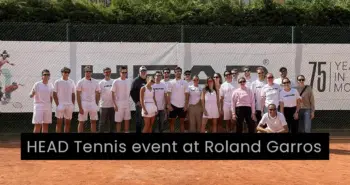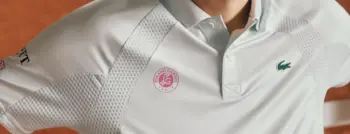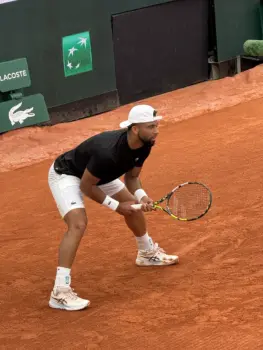Pickleball is one of America’s fastest-growing sports. Here are 3 Steps to Getting Started in Pickleball by Rush Walters.
3 Steps to Getting Started in Pickleball
“For the rapidly decreasing number of Americans who’ve never heard of pickleball, the obscure paddleball game is one of America’s fastest-growing sports.” Shannon Mullen, npr.org. But how do you get going? Let’s go through the 3 Steps to Getting Started in Pickleball.
So you want to join in on the fun, but you have some questions. What is Pickleball? Is it like ping pong on a tennis court?
Well, not exactly, but you do use paddles, and you do play on a smaller court.
My favorite aspect of the growing sport is that it is a lifetime sport. I can continue playing this game even when I get older. Honestly, most of the players I play against at my community center’s open court are 45+. I am not going to lie; some of them can school me. Never underestimate age and strategic ball placement.
Also, before we dive into the three steps to starting your pickleball career, do not worry about your previous racquet or paddle ball sports experience. I came from a tennis background and could apply my technique to pickleball. Obviously, tennis, racquetball, or other similar sports will help you pick up the game, but you do not need any requirements or previous experience to get started.
STEP 1: Understanding the Game
Pickleballmax.com provides an excellent diagram of the court’s dimensions, as seen below:
The classic game of pickleball is played in two formats, either singles or doubles. Now there are variations of other pickleball “games” played, such as cutthroat and skinny singles, but those are more or less modified games. The big reason why you would play cutthroat is that you have an odd man out for doubles. Therefore you only have 3 players. Skinny singles are just a slower-paced game; all you do is play singles on half of the court.
Basic Rules for Singles and Doubles
The first player to 11 points wins the game, but you have to win by two points. For example, if the game is scored 10-11, it is not over until one player is two points ahead of the other player after already having made it to 11 points. You can go on and on and on until someone reaches two points ahead of the other player. Before each serve, the player serving must call out the score. You always start with your score first, then your opponent’s. In doubles, you begin by stating your score first, your opponents, then who is serving on your side. If the score is 3 for you, 2 for your opponents, and you are the second server, you would state “322.”
You can only score a point when you are serving. If you are not serving and you win the “point,” you are only winning the ability to serve or possessing the ball. You typically win a point when your opponent messes up a shot or cannot return your shot. Examples: your opponent hits the ball out of bounds or hits it at the net, they allow the ball to bounce twice on their side of the court, and anything, where a player cannot return a ball, is considered a point for the other team.
The first serve of the game is always started on the right side of the court. The server always serves across the court. Determining who serves first can be decided in several ways, you could flip a coin, play rock paper scissors, or spin your paddle, similar to tennis. That being said, during open court play at my community center, by default, we always have the left side of the court serve first (I put an “FS” on the diagram above to better explain where players serve first at my community center).
When serving, you can only make contact with the ball below your waist. Making contact with the ball above your waist during a serve is illegal. You must always serve behind the baseline.
Two-Bounce Rule
A player cannot hit the ball in the air, before it makes contact with the ground within the first 2 passes of the ball. The ball must bounce on the ground first before you hit it from a serve and before you hit it from the return of the serve. This rule essentially eliminates a player from hitting a “dominating” shot right off the bat.
Kitchen Rules
“If you can’t stand the heat, get out of the kitchen.” – Unknown
This quote existed way before pickleball, but the principle behind it applies. The kitchen can be an intense play area, especially when the ball gets moving.
You can only step inside the kitchen when the ball has bounced inside the kitchen. If you step in the kitchen accidentally or on a follow-through, it is a fault, and you give a point to your opponent.
For a full run-down on the extensive rules of pickleball, I would suggest referencing the 2023 USA Pickleball official rule book.
STEP 2: Equipment Needed
Shoes, and paddles, knees and toes, knees and toes.
This step is fairly self-learned, but I wanted to give you a rundown on the equipment you need to get started.
Obviously, wear athletic clothes to play pickleball, no jeans or any type of formal wear. As for shoes, you can start with an athletic shoe, but if you decide to truly pick up the sport I would recommend using an official pickleball shoe or a tennis shoe. I wear my tennis shoes when I play, and they work great. You could easily get away with using an official pair of racquetball and/or ping-pong shoes. The big difference between a run-of-the-mill athletic shoe and a pickleball shoe is its ability to grip the court. Official tennis and pickleball shoes are reinforced with a great amount of rubber on the soles in order to grip the court and last for a longer period of time. The gritty surface of an outdoor court can eat away at simple athletic shoes quickly!
I currently wear Adidas’ Defiant Bounce 2.0.
Also, as for a bag, you do not have to have one to start out. I used to hold my pickleball gear in an older drawl-string bag in my closet. My wife bought me the Franklin Pickleball Sling Bag for Christmas, which comfortably holds three paddles. I can force it to hold four if needed; I probably need to upgrade my bag sometime.
Paddles
My paddle recommendation for a beginner player differs for intermediate and advanced players.
When you are just getting started and testing the waters/unsure if you want to invest yourself in the sport truly, I would recommend just getting a pack of two paddles, such as Niupipo Paddles.
My wife bought me that exact set for Christmas a couple of years ago when I was testing the waters of Pickleball. As soon as I got serious about it, I researched what type of paddle I wanted based on my tennis style of play. I chose to focus on spin and control rather than power. Therefore I read reviews online and concluded that the Joola Vision CGS 14 was the paddle for me. Check out my review of it here.
If you want to go more of a power route, I would recommend starting with Stiga’s Aviox Fiber Poly Pro Paddle, and then upgrading to the Stiga Aviox Carbon Nomex.
As for a top-tier power paddle, I would suggest looking at ProKennex Black Ace Pro. I have yet to review this paddle, but it is on my to-do list! This would be a paddle for an upper intermediate to advanced player.
There are plenty of mid-range paddles too, where offer a unique blend of spin and power. Paddle choice truly comes down to personal preference and your goals with Pickleball.
STEP 3: Practice Practice Practice
As with anything else, if you want to get better at something, you must consistently practice it over and over and over; consistency is key especially in Pickleball. The saying “if you don’t use it, you’ll lose it,” very much applies to Pickleball as well.
I try to play with a group at my community center weekly consistently. We play doubles from 12-3 Monday – Friday and then Monday nights from 6-8. People of all ages and skill levels play this sport. Open play is perfect for anyone wanting to learn pickleball. You might run into a grumpy person every now and then, but from my experience, most players are happy to teach others how to play during open court.
Strive to learn the following swings: forehand, backhand, serving, dinks, overheads, and volleys. I plan to cover these forms in detail in a future tennisnerd.net article.
Once you have gained some experience, I challenge you to enter into a local tournament. Grow, grow and keep on growing. You can only get out of it, what you put into it. When I used to coach a local high school boy’s tennis team I would tell them that I am giving you this seed of knowledge and you must water it to make it grow. I cannot water it for you, I can teach you how to water it, but I cannot nor can anyone else water it for you. Storms, weeds, droughts will come, but you must strive to continue to grow your seed.
I pull this from the parable of the seed in Matthew 13 from the Bible.
In terms of Pickleball, the seed is the learning of the game. Only you can improve yourself/water your seed to make it grow. There will be those out there to help, but only you can make yourself better. There will be challenges too, the weeds, storms, droughts, etc. You need to keep watering your seed, keep growing.
